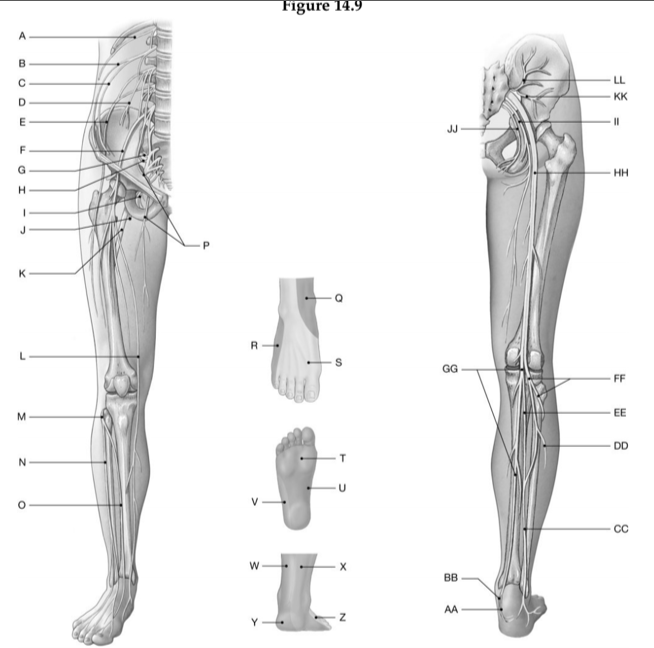Where are the submandibular salivary glands?
A. Below the tongue
B. Inferior to the angle of the mandible on each side
C. Anterior to the ears
D. None of these are correct.
Answer: B
You might also like to view...
Using the figure below, identify the labeled part.

1. Label A: ______________________________
2. Label B: ______________________________
3. Label C: ______________________________
4. Label D: ______________________________
5. Label E: ______________________________
6. Label F: ______________________________
7. Label G: ______________________________
8. Label H: ______________________________
9. Label I: ______________________________
10. Label J: ______________________________
11. Label K: ______________________________
12. Label L: ______________________________
13. Label M: ______________________________
14. Label N: ______________________________
15. Label O: ______________________________
16. Label P: ______________________________
17. Label Q: ______________________________
18. Label R: ______________________________
19. Label S: ______________________________
20. Label T: ______________________________
21. Label U: ______________________________
22. Label V: ______________________________
23. Label W: ______________________________
24. Label X: ______________________________
25. Label Y: ______________________________
26. Label Z: ______________________________
27. Label AA: ______________________________
28. Label BB: ______________________________
29. Label CC: ______________________________
30. Label DD: ______________________________
31. Label EE: ______________________________
32. Label FF: ______________________________
33. Label GG: ______________________________
34. Label HH: ______________________________
35. Label II: ______________________________
36. Label JJ: ______________________________
37. Label KK: ______________________________
38. Label LL: ______________________________
A laminectomy is a procedure used to treat osteoporosis that removes part of the
posterior arch of a vertebra. Indicate whether the statement is true or false
The colloid osmotic pressure in the capillary is caused by __________.
What will be an ideal response?
A cut through the long axis of an organ is a/an ________ section.
A. transverse B. oblique C. longitudinal